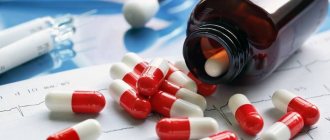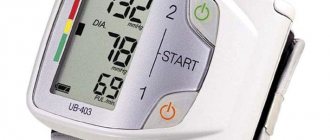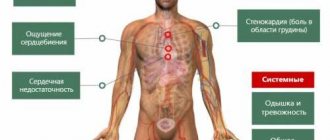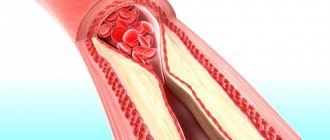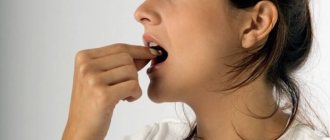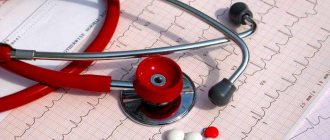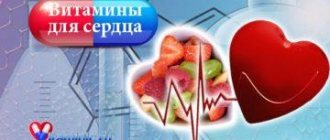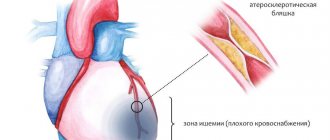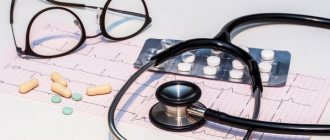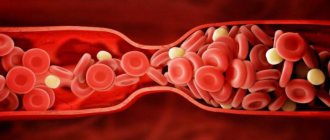1 / 5 ( 1 voice )
Arrhythmia is a disorder of the heart rhythm. For this disease, a fairly extensive list of medications is effective. If undesirable reactions occur, they can be replaced with an analogue. Only a doctor can select it, since the prescription depends on the form of the disease and the degree of its development. It is necessary to understand how to cope with arrhythmia with the help of special medications and sedatives, as well as how effective homeopathy is.
General principles of treatment
Treatment of arrhythmia begins after determining the cause that caused it. The patient is prescribed therapy only after a complete examination. In addition to antiarrhythmic drugs, a patient who has been diagnosed with psychosomatic disorders may be prescribed sedative medications. Taking tranquilizers is allowed. They are auxiliary and should be used in combination with medications against arrhythmia. All medications used for arrhythmia are taken at a certain time, usually after meals. They are allowed to be used only as prescribed by a doctor. Such medications are selected taking into account the form of arrhythmia, the severity of the disease and the age of the patient. Therefore, you cannot choose them yourself.
Arrhythmia can be triggered by taking certain medications. In this case, reduce their dosage or replace the medicine with an analogue.
General principles of drug treatment
All medications for atrial fibrillation - a list with a huge number of names. The choice of drugs is difficult even for an experienced doctor.
Chronic management of tachyarrhythmias in children depends on a number of factors, the most important of which is knowledge of the specific natural history of each tachycardia. Other factors to consider when choosing a therapeutic approach are the severity of symptoms, frequency of seizures, associated heart disease, and the adverse effects of these drugs.
Based on natural history, it is recommended that patients presenting with tachyarrhythmia during the first year of life receive drug therapy until they are 1 to 2 years of age and then maintain clinical control. When arrhythmia occurs after 5 years, the antiarrhythmic drug should be maintained for an extended period or until indicated by electrophysiological testing.
Atrial fibrillation is dangerous due to complications, so the treatment of the pathology should be selected by a doctor.
- Among the general principles that determine which medicine to use for atrial fibrillation, several main directions can be distinguished.
- Treatment of the disease that caused fibrillation, if any (hypertension, thyroid dysfunction, pulmonary pathologies, diabetes mellitus). Sometimes you need to stop taking medications. For example, if Vasobral is prescribed, atrial fibrillation may be more likely to occur due to caffeine.
- Prevention of AF is prescribed for paroxysmal and persistent forms.
- Termination of an attack of fibrillation that has already begun is more effectively achieved by intravenous administration of medication.
- Maintaining sinus rhythm with a constant type of fibrillation does not always make sense; the need for this treatment is determined by the doctor.
- Prevention of such a dangerous complication as thrombosis is carried out in any type of AF.
Antiarrhythmic drugs
Antiarrhythmic drugs act directly on the myocardium, improving metabolic processes in it. There are 4 classes of medications with the following effect:
| Drug class | Action |
| Sodium channel blockers | This group includes Quinidine, Mexiletine, Lidocaine, Aymalin, Disopyramide. Such drugs improve conduction and affect the time of repolarization, when the myocardium relaxes after contraction. |
| Beta blockers | This class includes Bisoprolol, Metoprolol, Timolol. They are prescribed if arrhythmia is accompanied by deterioration of the nervous system. |
| Potassium channel blockers | This group includes Amiodarone, Ibutilide, Nibentan, Sotalol. They are prescribed to normalize the functioning of the ventricles and atria. |
| Calcium channel blockers | This class includes Verapamil, Adenosine. They prevent calcium from entering cardiomyocytes, which is necessary for myocardial contraction. |
- In case of atrial fibrillation, the patient is prescribed sodium channel blockers, which increase the repolarization time. They weaken the work of the myocardium. A common side effect when taking them is a lack of platelets, headache, and allergies. It is not recommended to take them after a heart attack. If ventricular arrhythmia occurs, the patient will be helped by drugs that reduce repolarization. The drugs affect the activity of the nervous system and can lead to fainting, convulsions, and epilepsy.
- With tachycardia, the patient requires drugs that do not affect repolarization. If the recommended dosage is not followed, they can cause cardiac arrest.
- Beta blockers are used to lower blood pressure and improve cerebral circulation. They are prescribed to patients who have recently had a heart attack or stroke. Only a single dose is allowed. It is prohibited to use beta blockers to treat patients with bronchial asthma and severe heart failure.
- For high blood pressure, calcium channel blockers are effective. During treatment, it is necessary to monitor the patient's pulse and blood pressure. If the expected result is not achieved, the dosage of these medications is increased.
- Potassium channel blockers are prescribed to patients at risk of ventricular fibrillation. They have a long-lasting effect that manifests itself even several months after discontinuation.
First of all, patients are prescribed potassium channel blockers, but if the expected effect is not achieved, it is recommended to replace them with sodium channel blockers. The simultaneous use of antiarrhythmic drugs and sedatives is allowed.
Injectable medications work faster, but their effect quickly disappears. Antiarrhythmic drugs in the form of tablets have a longer effect, but are not suitable for relieving symptoms.
Pathogenesis of irregular rhythm
Sinus arrhythmias, as a rule, are associated with changes in the neurohumoral regulation of the sinus node. It is innervated by both sympathetic and parasympathetic nerve fibers. Therefore, a change in balance towards one of these parts of the nervous system can lead to an acceleration or, conversely, a slowdown of the heart rate, and a pronounced imbalance can cause arrhythmia, interfering with the functioning of the sinus node.
The causes of atrial fibrillation or ventricular tachycardia are usually microscopic areas of fibrosis that lead to local conduction disturbances . As a result, a single cardiac impulse breaks up into many parallel ones, some of which can circulate and cause irregular contractions of individual bundles of muscle fibers.
This is interesting! Congenital disorders of the structure and functioning of ion channels are also possible, which lead to the development of severe, treatment-resistant arrhythmias. They are called channelopathies.
As a result, the atria cannot contract normally and do not supply enough blood to the ventricles. In addition, the ventricles themselves contract irregularly from random impulses passed from the chaotically excited atria, which further worsens hemodynamics.
Patients complain of a feeling of interruptions, a feeling of rapid heartbeat, and often their heart failure symptoms worsen.
It is important to understand the difference between tachycardia and arrhythmia.
The first term means increased heart rate. It can occur in response to strong emotional shocks and activation of adrenergic stimulation of the heart or during physical exertion, and ensures enhanced functioning of all body systems during stress reactions.
In this case, impulses still occur in the sinus node at regular intervals, the periods of systole and diastole alternate evenly, and the atria and ventricles contract synchronously.
In the case of arrhythmia, the formation of an impulse or its propagation throughout the myocardium is disrupted, as a result of which there is a large difference in the contraction of different parts of the heart. Extraordinary contractions may occur, often multiple, which leads to disruption of hemodynamics and peripheral circulation.
Tranquilizer blockers
Tranquilizers restore heart rhythm by lowering blood pressure. They are especially effective in situations where the patient is allergic to other drugs with a similar effect. Medicines have proven themselves in the treatment of the following diseases:
- atrial fibrillation;
- tachycardia;
- for diseases of the coronary vessels;
- with organic heart lesions.
The group of tranquilizers that can be used for arrhythmia include: Xanax, Elenium, Diazepam, Grandaxin, Seduxen. The patient must take tranquilizers in a hospital setting.
Slow calcium channel blockers
Calcium antagonists belong to the third group of drugs for treating atrial fibrillation. They act on calcium channels, which remain open during potential development for a longer time. This blocks phase 2, the plateau.
Verapamil is available in various forms:
- capsules, tablets containing 40 or 80 g of the main compound;
- extended-release tablets - 120 or 240 mg of verapamil.
The initial dose is up to 80 mg three times a day or up to 240 mg (in the prolonged form) twice a day with meals.
Diltiazem
Dosage forms of Diltiazem:
- tablets containing 0.03, 0.06 and 0.09 g of active substance;
- depot tablets - 0.09, 0.12, 0.18, 0.24 g;
- depot capsules - 0.09, 0, 12, 0.18 g of diltiazem.
The initial dosage for oral administration is 60 or 90 mg 3 and 2 times a day, respectively. The dose may be increased. For prolonged forms, a single dose per day is sufficient.
Local anesthetics
In the treatment of arrhythmia, it is practiced to take medications that have an analgesic effect. Lidocaine and Novocainamide have these properties. They mainly affect the ventricles and are used for the following pathologies:
- ventricular fibrillation;
- ventricular extrasystoles;
- ventricular fibrillation.
They are released only in the form of injections. Anesthetics are characterized by quick results, but they only last for a short time.
The most common adverse reaction when taking anesthetics is allergies.
Surgical intervention
This method of treatment is used when drug therapy has not helped, the disease is advanced and the condition worsens sharply. People who are prone to it are usually prescribed coronary artery bypass grafting or arterial stenting. These two methods are among the most effective, but do not provide a 100% result in restoring heart rhythm.
Another common method of surgical treatment is radiofrequency ablation. During it, a small puncture is made in the vessel into which the electrode is inserted. It cauterizes and eliminates the source of pathology, if it is small.
In advanced forms of arrhythmias, patients may experience cardiac arrest, so the installation of pacemakers is necessary to continue life. The device itself is placed in the subclavian region, and its electrodes are connected to the heart. They create their own effect on the body, thereby supporting the functioning of the heart.
After all surgical interventions, the patient is also prescribed medications to regulate the heart rhythm, as well as vitamins and other medications to promote a speedy recovery.
|
Sedatives
Sedatives have calming properties. Taking them improves sleep and normalizes heart rate. They can be used in the form of tablets or tinctures.
If side effects occur in the patient, sedatives are discontinued. Popular sedative medications include the following drugs:
- Antares - the product is used daily, available in tablet form. The treatment course is 10 days.
- Altalex - the medicine contains natural essential oils; they are added to tea in 10-20 drops, depending on the doctor’s recommendations.
- Sanosan - a medicine containing valerian and hops, taken before bed.
- Novo-Passit is a medicine consisting of plant extracts of elderberry, St. John's wort, hops, passionflower, and hawthorn. You need to drink it 1 teaspoon at a time, strictly following the instructions.
The action of these drugs is aimed at inhibiting the nervous system. They relieve nervousness and only help relieve symptoms of arrhythmia. For this reason, they are used only in combination with antiarrhythmic drugs.
Potassium channel blockers
Drugs that act on potassium channels (phase 3, terminal repolarization) belong to the third class of antiarrhythmic drugs. They prolong the development of the action potential, slow down impulse conduction and reduce the excitability of myocardial cells.
The use of Amiodarone in interrupting atrial fibrillation is effective. Treatment is carried out in a hospital setting or under constant supervision by a cardiologist in severe cases of atrial fibrillation. The drug simultaneously has the effect of inhibiting alpha and beta adrenergic receptors.
Available in the form of tablets of 0.2 g. For the first 10-14 days of treatment, an initial dose of 3-4 tablets is prescribed, taken in several doses and before meals. Maintenance daily dosage - 0.5 - 4 tablets.
Cordaron
The use of Cordarone for atrial fibrillation is similar to Amiodarone - they have the same active ingredient. But the first remedy is more expensive. If you need to replace Cordarone with atrial fibrillation, then Amiodarone, Opacordene, Sedacorone can be prescribed. But in severe cases of AF, many doctors do not recommend such a replacement due to dosage errors.
Sotalex
The main substance of Sotalex is a sotalol derivative that has a blocking effect on potassium channels, alpha and beta adrenergic receptors.
In the first stages of treatment for atrial fibrillation, 0.16 g (1 tablet) is prescribed, divided into 2 doses. The dosage can be increased to 0.32 g, less often - to 0.64 g.
Attention! Most modern medications for hypertension do not cure, but only temporarily reduce high blood pressure. This is not bad, but patients are forced to take medications for the rest of their lives, exposing their health to stress and danger. To correct the situation...
Treatment with microelements
During arrhythmia, the body needs one of the microelements, and they need to be consumed in the form of tablets, otherwise an imbalance will begin in the body. As a rule, with this pathology there is a lack of potassium or magnesium.
Potassium deficiency is eliminated with the help of Asparkam, Smectovit. It is beneficial for patients to eat bananas and dried fruits.
Magnesium is contained in Asparkam, Magne-B6, Magnistad . Food products include nuts and seeds .
Antiarrhythmic treatment
Specific medications for arrhythmia allow you to restore the normal physiological rhythm of the heart. The basis of the therapeutic effect is the blockade of the functions of andreno receptors that respond to the level of adrenaline in the body. The course of therapy is prescribed exclusively by a specialist based on diagnostic data and analysis of individual patient data.
- A segment of beta blockers that reduce the state of overload of the nervous system by blocking the production of adrenaline, the stress hormone. Egilok, Ritmilen, Anaprilin, Cordanum and Flecainide, Acebutolol, Bisoprolol are widely used;
- Digoxin, Korglykon, Strophanthin are the most popular cardiac glycosides, prescribed for severe cardiac and respiratory failure;
- A series of potassium channel inhibitors, the doctor prescribes them as the most effective means for atrial fibrillation. In turn, they are divided into the Diltiazem group, which includes Bepridil, Gallopamil and the Verapamil group, consisting of Lekoptin, Finoptin, Isoptin.
- The range of potassium blockers eliminates ventricular flutter - fibrillation and consists of very popular drugs - Amiodarone, Bretyllium, Nibentan, Ibutilide and Dronedarone.
- Stabilization of cardiac dysfunction in the form of atrial or ventricular tachycardia allows the introduction of membrane stabilizing agents, which are divided into three subtypes.
- Type 1 – a containing Novocainamide, Quinidine, Aymalin,
- Type 1 - b is a product range of Trimecaine, Diphenylhydantoin, Mexiletine, Lidocaine, Tocainide.
- Subtype 1-c consists of Propafenone, Allapinin, Ethatsizin, Enkainide, Bonnecor.
- To stimulate blood flow and normalize it, ATP, products with a high content of magnesium, vitamins and potassium are introduced. These are “Magne B6”, “Panangin”, the vasodilator Captopril, statins and antioxidants are also prescribed.
Despite the huge selection of drugs that allow you to choose the optimal combination in each individual case, almost all drugs have similar side effects. Manifestations of nausea, abdominal pain, weakness, dizziness, hand tremors, insomnia, nervous and heart disorders, allergies and skin rashes are inherent in each drug.
In addition, myocardial infarction, acute asthma, hypotensive syndrome, severe forms of renal and hepatic failure, severe bradycardia, acidosis and cardiosclerosis are absolute contraindications for taking antiarrhythmic drugs.
Homeopathic medicines
Homeopathy has been successfully used to treat cardiovascular diseases. In this case, there is practically no negative impact.
A patient with arrhythmia can use the following recipes:
- Kalina . When grinding 0.5 kg of berries with 2 liters of water, an excellent remedy for improving heart rate is obtained. You can consume it after 8 hours by adding a little honey. Drink it in 3 doses. per day 70 mg. The course of treatment is 1 month.
- Calendula . A decoction is prepared from it, pour 1 tsp. dried flowers with a glass of boiling water. Take 3 rubles. in a day.
- Rose hip . A decoction of it is prepared according to the following recipe: 1 tbsp. fruits are poured with 200 ml of water. Drink 1.2 cups of the product before meals.
- Melissa . For the decoction, take 1 tbsp. l. vegetable raw materials, pouring 300 ml of boiling water over it. Take 100 mg 3 times. in a day.
- Black currant . The juice is effective against arrhythmia. You need to drink it 50 ml 3 times. in a day.
- Horsetail . The infusion is prepared as follows: 1 tsp. raw materials are poured with a glass of boiling water. Use 1 tbsp. l. 5 rub. in a day.
- Hawthorn . A decoction is prepared from the plant according to the following recipe: 1 tsp. pour 300 ml of water into the flowers and bring to a boil. Take it before meals 3 times. in a day.
- Cornflower . An infusion made from dried flowers has a healing effect on the heart and blood vessels. They require 1 tsp. for 1 liter of boiling water. Drink the resulting product three times a day, 50 ml.
Homeopathy is ideal for patients who cannot take other medications due to their effects on the liver and kidneys. However, more often they are prescribed in combination with antiarrhythmic drugs. It is not recommended to take homeopathic remedies on your own, as they have many contraindications.
Other antiarrhythmic drugs for cardiac arrhythmias
In addition to those listed, there are drugs that can be used as adjuvant therapy. These include the means listed below.
Sedatives
Relieves spasms and improves nerve cell conductivity. Allows you to relieve pain.
The greatest demand is:
Corvalol. Due to the action of this drug, you can get rid of sleep disorders caused by attacks of arrhythmia. You can find it in the form of drops for oral administration, 15 and 25 ml in a bottle.
The drops should be dissolved in about 1/2 glass of water and drunk before meals. The minimum dosage for adults is 15 drops 2 times a day. If necessary, it can be increased to 50 drops. Children should not be given more than 15 drops at a time.
The medicine should not be taken if:
- severe forms of liver or kidney failure;
- during pregnancy and breastfeeding;
- the presence of allergies to the components of the product.
A bottle of drops will cost about 20 rubles.
Valoserdin. Reduces the excitability of the central nervous system. Produced in the form of drops for oral administration, 25 ml in a glass bottle.
The method of administration is the same as for Corvalol. You should take 20 drops 3 times a day. If there is no visible effect, the dose can be increased to 40 drops.
You should pay attention to contraindications:
- age under 18 years;
- tendency to alcoholism;
- traumatic brain injuries.
The cost of 1 bottle is 50 rubles.
Tranquilizers
They are more potent than sedatives and have some similar functions.
Due to their stimulating and relaxing effects, the load on the cardiac system is relieved. Even a single dose is enough to relieve an attack of arrhythmia.
Most often recommended:
Phenazepam. Reduces the excitability of the subcortical structures of the brain, due to which nervous tension is reduced and muscles relax. Sold in the form of tablets (1 and 2.5 mg), in a package of 50 pieces, and in the form of a solution for intravenous administration (1 mg), 10 ampoules in a pack.
The minimum dosage is 500 mcg and is adjusted individually for each patient.
Not prescribed for:
- severe forms of poisoning;
- presence of problems with the respiratory system;
- under 18 years of age.
The price for tablets is 130 rubles, ampoules will cost 170 rubles.
Grandaxin. It has a moderate stimulating effect on the nervous system and reduces stress levels. Available in the form of tablets (50 mg) of 20 or 60 pieces. in a pack.
You should take 1-2 tablets 2 times a day. The maximum dose is 300 mg.
Use is prohibited if there are the following contraindications:
- intolerance to the components of the drug;
- pregnancy and lactation;
- severe mental disorders.
60 tablets can be purchased for 800 rubles.
Homeopathic
Medicines in this group eliminate the symptoms of arrhythmia by increasing the body's defenses and mobilizing hidden resources. In addition, their use can reduce the risk of developing more serious cardiovascular pathologies.
For arrhythmia take:
Yodum. It should be taken when irregularities in the heart rhythm are observed even with minor exertion, and it also helps to cope with symptoms of depression. Available in the form of granules (10 g), 30 pcs. packaged.
The granules should be dissolved 30 minutes before meals or 1 hour after. You should consume up to 8 granules per day in 4 doses.
Contraindications:
- allergic reactions to components;
- pregnancy and breastfeeding;
- age up to 18 years.
Price for 1 package – 120 rubles.
Arsenicum album. Prescribed for chronic cases of arrhythmia, it helps relieve weakness and emotional disorders. Produced in the form of homeopathic granules (10 g), 30 pcs. in a pack.
The method of administration is the same as that of Iodum. The maximum dosage is 10 granules in 3 doses.
Should not be used if:
- pathologies of the liver and kidneys;
- sensitivity to components;
- dyspeptic disorders.
The cost of 1 package is 85 rubles.
dietary supplements
They compensate for the lack of minerals in the body, which has a beneficial effect on heart health. Reduce cholesterol levels and stabilize blood pressure.
The most popular are:
Passilate. Restores blood flow to the heart muscle, which is disrupted during stress and anxiety attacks. Improves blood circulation. Can be purchased in the form of capsules (320 mg), 60 pcs. packaged.
Should be taken orally with food. The recommended dose is 1 capsule 2 times a day. Duration of 1 course is a month.
Contraindications include:
- chronic diseases of the gastrointestinal tract;
- age up to 12 years;
- kidney and liver diseases.
Price – 3500 rub. for 1 package.
Selenium. Renews selenium reserves in the body and helps normalize blood composition. Available in capsule form; 1 pack may contain 30, 60 or 180 pieces.
You should take 1 tablet per day.
Not prescribed if:
- age up to 14 years;
- intolerance to components;
- During pregnancy and breastfeeding.
60 tablets can be purchased for 150 rubles.
Vitamins
They are an excellent option for maintenance therapy. They help improve the health of all body systems, including the cardiovascular system, and allow you to cope with the symptoms and consequences of arrhythmia.
Useful vitamins for the heart during arrhythmia:
Biovital. A complex that provides the body with vitamins C, A and B, as well as some useful acids. Can be found in pharmacies in the form of dragees, 60 pcs. packaged.
You should use 1-2 tablets 2 times a day.
Contraindications:
- disturbances in the absorption and absorption of iron;
- excess vitamins in the body;
- sensitivity to components.
The drug costs about 350 rubles.
Antiox. Saturates the body with vitamins A, E and C, contains zinc and selenium. Produced in the form of capsules (390 mg), 60 pcs. in a pack.
Must be taken with meals with plenty of water. The daily dose is 1 capsule per dose.
Not accepted for:
- pregnancy and lactation;
- under 12 years of age;
- intolerance to components.
The cost of 1 package is 1400 rubles.
List of medications in the first aid kit for a patient with arrhythmia
When diagnosing arrhythmia, the patient must have antiarrhythmic and sedatives prescribed by a doctor. It is advisable to have one of the following medications with you: Corvalol, Novo-Passit, Antares, Persen.
Vitamins should also be present in the first aid kit of a patient with arrhythmia. Vitamin E (tocopherol) is beneficial for the heart and blood vessels. It improves blood circulation and reduces blood clotting. When taking the drug, you need to take into account that it is fat-soluble.
Vitamin P (rutin) is also useful. It restores blood circulation and strengthens blood vessels. In addition, it is noted that it improves the nutrition of heart tissue.
Vitamin C has the same properties, but also lowers blood cholesterol levels.
The patient may also be prescribed iron supplements, which are necessary to supply cells with oxygen. The first aid kit should contain one of the medications: Ferrovit-S, Ferlatum-Fol, Supra Vit Iron, Rotafer+ .
The patient must ensure that all medications are in sufficient quantity. You need to carry them with you.
Atrial fibrillation and anticoagulants
A necessary step in the treatment of AF is to prevent the formation of blood clots, especially thromboembolism. Therefore, anticoagulants are important in atrial fibrillation therapy.
It is important to take anticoagulants even after successful treatment with antiarrhythmic drugs.
Warfarin inhibits the synthesis of substances in the liver that are involved in blood clotting. The primary dose is 2.5-5 mg (1-2 tablets). To correctly select the further dosage, you need to determine the INR, which should ultimately be 2-3 units.
Due to the need for periodic monitoring of INR, sometimes you have to decide what can replace Warfarin for atrial fibrillation. Alternatively, anticoagulants such as Eliquis or Prabaxa may be prescribed. If treatment with drugs that block blood clotting is contraindicated, then aspirin is prescribed.
Eliquis
Eliquis will help with atrial fibrillation to significantly reduce the risk of stroke and thromboembolism. The active substance is apixaban, which inhibits one of the components of the blood coagulation system, that is, it is a direct inhibitor, like Pradaxa and Xarelto.
Eliquis is available in tablets containing 2.5 or 5 mg of apixaban.
It is not necessary to evaluate the INR while taking Eliquis. The dosage for MA is 5 mg 2 times a day. Sometimes the dose is reduced by 2 times.
Despite the similar principle of action on the coagulation system, only a doctor should determine whether Eliquis, Xarelto or Pradaxa is better for atrial fibrillation.
Doctor's advice on using medications
| To reduce the likelihood of side effects, you do not need to combine medications prescribed against arrhythmia with other drugs. They can be replaced with an analogue only in agreement with your doctor. For this reason, if the recommended therapy is too expensive for the patient, you should consult a doctor to change the drug. |
| If the patient has been prescribed many medications | It is recommended to keep a special diary in which to record the intake of each drug. You can also keep records on tear-off calendar sheets. The main thing is to note all medications taken. |
| Patients who have had a heart attack | You need to be careful. They must consume the said medications regularly. You can mark on your calendar when the drug you need runs out so you can purchase it in a timely manner. |
| Some anti-arrhythmia medications narrow the bronchi | Therefore, their use is not recommended for respiratory diseases. |
| Tablets should only be taken with water | Because juice, tea and coffee affect the metabolism of drugs. They also affect the absorption of such drugs. |
| Before a long trip or vacation | A patient with arrhythmia must ensure that the medications he needs are sufficient. |
Pharmacies sell pill bottles with special compartments, some even with a sound signal. This device reminds you that you need to take a certain drug. It is recommended to take the tablets in the evening. It is better not to take them out of the package, but to cut them off with the wafer.
All drugs against arrhythmia are taken in a certain sequence, observing the time of administration. If side effects of such medications occur, there is no need to stop taking them. Only a doctor can judge the need to replace it. In most cases, it is recommended to continue taking the drug.
Criteria for choosing drugs for arrhythmia
Achieving an antiarrhythmic effect from the use of tablets of various groups is due to the specific influence of the drugs on the mechanisms of intracellular transport of ions of substances such as sodium, potassium, calcium. The effect of drugs is reflected in the physiology of electrical processes in the cells and cell membranes of the heart muscle, metabolism, and ions.
The criteria for choosing an antiarrhythmic drug are based on the following indicators of the patient’s body condition:
- degree of excitability of the nervous system;
- the presence of chronic pathologies;
- established type of rhythm disturbance (arrhythmia);
- the content of electrolytes in the blood;
- level of hormonal balance.
Even healthy people in moments of overexcitation can feel a rapid heartbeat, which is the result of increased contractions of the atria and ventricles. In a healthy person, such symptoms disappear after returning to a calm state. For patients suffering from heart disease, it is useful to know the names of medications that can provide first aid to relieve the severity of an arrhythmia attack and even out the heart rhythm.
Contraindications
Under no circumstances should medications of the specified pharmaceutical group be used if at least one of the following reasons is present:
- Severe arterial hypotension.
- Bradycardia. A drop in heart rate to 50 beats per minute or less.
- Myocardial infarction. Because beta blockers tend to weaken contractility, which in this case is unacceptable and deadly.
- Sinoatrial blockades, defects of the conduction system of the heart, sick sinus syndrome, impaired movement of the impulse along the His bundle.
- Heart failure in the decompensated phase before correction of the condition.
Relative contraindications require consideration. In some cases, drugs may be prescribed, but with caution:
- Bronchial asthma, severe respiratory failure.
- Pheochromocytoma without simultaneous use of alpha-blockers.
- Chronic obstructive pulmonary disease.
- Current use of antipsychotic drugs (neuroleptics). Not always.
It is also not recommended for use if you have an allergic reaction to the active substance. The drug is prescribed with great caution for polyvalent responses to medications as such.
As for pregnancy and breastfeeding, use is not recommended. Only in extreme cases, when the potential benefit outweighs the possible damage. Most often, these are dangerous conditions that can harm the health or even take the life of the patient.
Emergency medications
Tablet forms of ion channel or adrenergic receptor blockers are prescribed only when patients are in a stable condition, more often with a permanent form of rhythm disturbance.
If an attack of tachycardia occurs, and especially ventricular fibrillation or flutter, then switch to intravenous injections of drugs. Treatment tactics depend on the clinical picture of the arrhythmia, the underlying disease and accompanying symptoms.
For emergency care, ampoule medications are used, the sequence of their administration should be as follows (if ineffective, the following drug or its analogue is used):
- Verapamil,
- Betalok,
- Cordaron,
- Novocainamide.
Features of treatment
When an attack occurs for the first time, the treatment regimen is based on ECG data, so independent treatment can be life-threatening. First aid in such cases is to lay the patient down (the best position is half-sitting), provide fresh air, and give soothing cardiac drops (Corvalol, hawthorn tincture).
If your heartbeat is strong, you can gently massage your closed eyelids or the area where your carotid arteries are pulsating. After this, you must urgently call an ambulance.
Attack of supraventricular tachycardia
Isoptin and cardiac glycosides are administered intravenously. If there is no result, then switch to droppers with Cordarone or Novocainamide. Electrical defibrillation is used as a last resort.
Atrial fibrillation
Novocainamide for an attack of arrhythmia
Refers to the most common form of severe rhythm disturbance. The attack is relieved by administering 10% Novocainamide in a dosage of 10 ml under blood pressure control.
The drugs of choice are Ritmilen and Quinidine powders. Their effectiveness is increased by intravenous injections of Panangin. In case of arrhythmic collapse or the onset of pulmonary edema, electrical pulse therapy is performed.
Tachycardia of ventricular origin
Often occurs against the background of myocardial infarction. Intravenous jet administration of Lidocaine is indicated, and if there is no effect, Cordarone and Novocainamide are prescribed. If acute circulatory failure or cardiogenic shock occurs, then stimulation with electrical impulses is a safe and effective treatment method.
Symptoms and diagnostic methods
Symptoms of arrhythmia in old age are in most cases moderate, less often they are very pronounced. At the time of the appearance of symptoms noticeable to the patient, the disease is already quite advanced.
In the early stages, arrhythmia is detected only during a medical examination, since there are no obvious manifestations yet. Significant heart rhythm disturbances are manifested by the following symptoms :
- frequent severe dizziness;
- chronic weakness;
- periodic attacks of nausea;
- episodic pain in the heart area;
- short-term fainting state after an emotional outburst or a sudden change in body position;
- sweating;
- coldness of hands and feet;
- feeling of lack of air;
- periodic feeling of heart twitching after exercise;
- episodic attacks of panic fear for which there are no apparent reasons.
If there is a suspicion of arrhythmia in an elderly person, he or she requires an examination . For this, several diagnostic methods are used, the main ones being:
- Ultrasound of the heart muscle with Dopplerography (determining the level of blood circulation);
- electrocardiogram;
- X-ray of the chest area;
- MRI;
- determining the pulse rate and listening to the heart muscle.
If necessary, the doctor can prescribe additional diagnostic measures that will help not only clarify the diagnosis, but also prescribe the most effective treatment for a particular patient.
